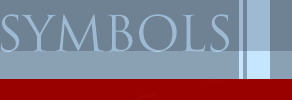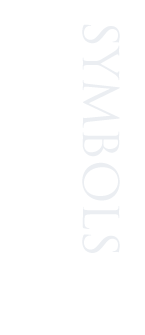Armorial Bearings
Armorial bearings, being for distinguishing persons of,
and within, a family, cannot descend to, or be used by, persons who are not
members of the family. The surname indicates the family to which a family
belongs. A person named Macdonald cannot bear a Ross coat of arms, or any part
of it.
The Chief's coat of arms fulfils within the clan or
family the same purpose as the Royal Arms do in a Kingdom. There is no such
thing as a "family crest" or "family coat of arms" which
anyone can assume, or a whole family can use.
Armorial bearings, of which the Crest is a subsidiary
part, are a form of individual heritage property, devolving upon one person at a
time by succession from the grantee or confirmee, and thus descend like a
Peerage. They indicate the Chief of the Family or Clan, or the Head of each
subsidiary line or household descending from members who have themselves
established in the Public Register of All Arms and Bearings in Scotland a right
to a subsidiary version of the arms and crest, containing a mark of difference
indicating their position in the Family or Clan. This is not a "new"
coat of arms, it is the ancient ancestral arms with a mark of cadency, usefully
showing the cadet's place within the family. It identifies where you, and your
own heirs, belong within the family. It is, as well as being beautiful, a
valuable system of identification.
The parts of the armorial bearings consist of:
·
The Shield, bearing the basic device
·
The Helmet, with its Crest, which
sits on top of the helmet
·
The Motto in a scroll
·
The Mantling or cape, which kept the
sun off the wearer's armor in hot weather
Very rarely, two Supporters on either side of the
shield, which are external attributes of the arms of Peers, Chiefs and a very
few other persons of special importance, including Knights Grand Cross of
Orders.
It is illegal to assume and purport to use your Chief's
arms without a due and congruent recorded difference. Anyone who does so merely
publishes their own ignorance.
There is no such thing as a "Clan coat of
arms". The arms are those of the Chief, and clansmen have only the
privilege of wearing the strap-and-buckle crested badge to show they are such
Chief's clansmen.
One cannot have a crest without first having a shield
of arms, because the crest was a later addition. Misuse of crests arises from
misunderstanding of the badge rule under which junior members of the family may
wear in specified manner their Chief's crest as badge.
Crest Badge
The Crest of the Chief is worn by all members of the
Clan and of approved Septs and followers of the Clan, within a strap and buckle
surround bearing the Chief's motto. This is for personal wear only, to indicate
that the wearer is a member of the Clan whose Chief's crest-badge is being worn.
The badge or crest is not depicted on personal or business stationery, signet
rings or plate, because such use would legally import that the tea-pot, etc.,
was the Chief's property!
Acquisition of Grants
and Matriculations of Arms
Those who wish to use arms in any particular sense must
petition for a Grant of Arms or -- if they can trace their ancestry back to a
direct or, in some cases collateral, ancestor -- a "cadet
matriculation" showing their place with the family. Forms of Petition and
sample proof-sheets relative to such application can be supplied if required.
When a grant, or matriculation, of arms is successfully
obtained, an illuminated parchment, narrating the pedigree as proved, is
supplied to the Petitioner, and a duplicate is recorded in the Public Register
of All Arms and Bearings in Scotland and/or the Public Register of Genealogies
and Birthbrieves.
Application for such a Confirmation, by Letters Patent
or Matriculation, from the Lord Lyon King of Arms is the only way to obtain a
genuine coat of arms.
Tartans
People normally wear only the tartan (if any) of their
surname, or a "district tartan" connected with their residence or
family's place of origin.
Scottish Heraldry
All heraldry in Scotland is controlled by the Court of
the Lord Lyon King of Arms, commonly known as the Lyon Court, located at New
Register House in Edinburgh.
Please also consult the Heraldry Society of
Scotland :
http://www.heraldry-scotland.co.uk/
| 
